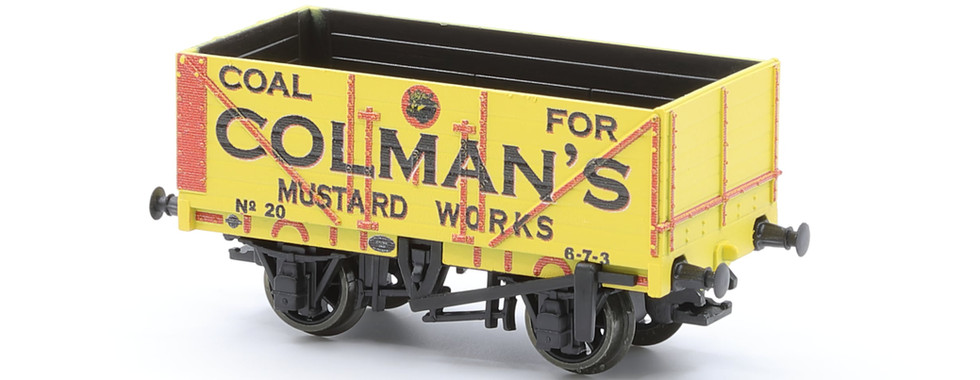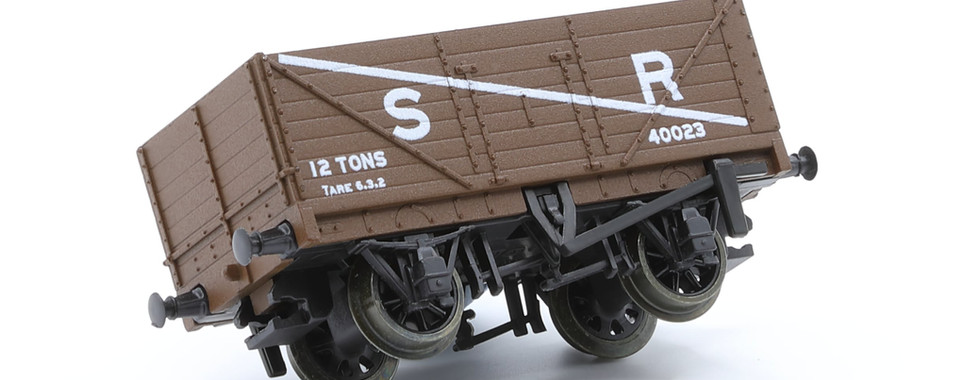The PECO 'Wonderful Wagons' range has been a staple of N Gauge freight rolling stock for decades, with some of the original tooling dating back to the late 1960's. Against more recent releases they were beginning to show their age, so it was welcome news when PECO announced newly tooled 7 and 5 plank versions of the RCH 1923 standard wagons in 2019 under the 'Quality Line' branding.
The first liveries of these wagons are now arriving with stockists, and we are taking a look at two versions of the 7 plank wagon in this review.
The Prototype
The Railways Clearing House (RCH) was formed in 1842 by nine of Britain's railway companies to provide a common body for the apportionment of costs and revenue for journeys and shipments travelling over more than one company's tracks.
Following a series of series accidents, in 1887 the RCH produced the first standardised specifications for a railway wagon in response to the need for the regulation of construction and maintenance of goods vehicles. The specifications included the materials and minimum sizes to be used in the construction of wagons and specified the use of iron or steel parts to help improve structural strength and improve crashworthiness.
The final major revision to the RCH specifications was made in 1923 and covered all types of wagon, accounted for new production techniques and was intended to push owners to improve the standards of their wagon fleets. The length of the wagon over headstocks was increased from the 1907 design of 15ft to 16ft 6in. The width remained almost the same to ensure the wagons could be handled by existing equipment at the various sites they served. The standard capacity for the 1923 design was now 10 tons for the 5 plank wagon and 12 tons for 7 plank.
In addition to extensive use by private owners, the RCH design was adopted by several of the new, large railway companies for their mineral wagon fleets with both the LMS and LNER selecting the 1923 7 plank design as their standard mineral wagon. Southern Railways also ordered a number of wagons for use in the Kent coal field. Many thousands were built over the decades, and the type survived in use right up until the 1980's with the National Coal Board. Numerous examples now preserved at steam railways across the country.
The Model

The wagons are presented in a square, clear jewel type case with a plastic base and transparent, flexible plastic strip to hold the model in place. Those who keep their wagons on the layout or in other storage will surely find a use for these cases as storage for small parts or other items of modelling equipment! The base has positions for various different wheelbases, perhaps indicating we'll see further new models with longer wheelbases in the future?
The wagons represent those built to the RCH 1923 standard, with 9ft wheelbases and a length of 16ft 6in over headstocks to which the model dimensions scale exactly. This is the first time that the end door variant has been replicated in the PECO range.


The body moulding is very nice indeed, with commendably thin top edges which are on a par with the highly regarded Mathieson 7 plank wagons. This has been achieved by stepping the interior, which each plank slightly thicker than the previous as you move toward the wagon floor. This does give the interior a V shaped profile, but it's so shallow it's not noticeable unless you are specifically looking for it. This method also helps to minimise any bowing of the wagon sides which again was barely noticeable on the samples reviewed here.
Internal detail includes floor planking with drop doors, corner bracing at the non door end and side door outlines. There is also a basic representation of the end door hinge along the top edge of that end. Internal strapping is not represented, but this is also the case with all other manufacturers versions of these wagons due to the injection moulding process and the difficulty those details would create in removing the body from the tooling. That process has resulted in two ejector pin marks on the drop doors, but they are not particularly noticeable.

Externally, the body mouldings feature some very fine planking detail, which is subtle enough to be visible but not overly deep, something which affects the Graham Farish 7 plank model. The upper two planks are correctly depicted as taller than the lower five. Metal side bracing strips are also finely moulded, with bolt detail present whilst the side doors also feature strapping detail along with hinges and the small metal strip in the middle of the door that protects the wooden planks from the door stop when open. There is no representation of the metal capping strip or fixings found on wagons built post war or have been subject to repair.

The end door also features strapping & bolt detail which is all finely moulded. Missing however is the locking pin chain detail which is represented on both the Farish and Mathieson models. Although both models in this review feature them, PECO have also tooled for wagons not fitted with end doors. The non door end features the two prominent wooden stantions and large metal bracing plates at the corners.

The model represents the wooden type of underframe, with the solebars and headstocks being moulded as part of the body. The iron work found along the length of the solebars is all present and like the body includes some fine rivet detail. The headstocks correctly protrude fractionally beyond the wagon sides and feature a somewhat crude representation of the coupling hook which amounts to a simple rounded protrusion in the centre. RCH style buffers are moulded as part of the chassis and fit in to cutouts in the headstocks.

Now featuring the correct 9ft wheelbase, the chassis itself is a separate moulding which includes W irons, brake gear and an NEM mounting for the standard Rapido coupling. This is a welcome development and replaces the older style sprung coupling whilst eliminating the large cutout in the headstocks present on the older PECO models. There was a very slight droop in the coupling evident, but probably not enough to cause problems (non were seen during running of the models on a test circuit)
The brake gear, whilst being inline with the wheels, is perhaps a little simplistic in appearance when compared to other manufactures models but represents the major components. In what is perhaps the models weakest area, the brake lever and ratchet are a little on the clunky side which does jar with the otherwise finely moulded body. Conversely, the door stop found between the V hangers is distinctly undernourished! The outer V hangers themselves fit into a gap in the solebar which means there is a gap in the middle where the solebar should continue. Whilst not that noticeable on the darker liveries, it is more obvious on the Colman's wagon as this gap is the same black as the chassis rather than the yellow of the solebar.

The axles are held in place by clips moulded as part of the underframe, with pinpoints fitting in cutouts in the axle boxes. It's a slightly strange arrangement compared to other models and I'm not sure if it offers any significant benefit over standard pinpoint mounting, except for perhaps a fraction more vertical movement. Regardless, the running qualities of the model were excellent on both plain track and through pointwork with very free rolling axles. A significant improvement over the older models is the use of metal tyred wheel-sets with plastic, eight spoked centres instead of the previous all plastic versions.
The wagons weigh in at 5 grams.
Finish
The basic colours of the wagons are nicely applied, with a smooth finish free of blemishes and excellent opaqueness. The livery elements appear to have been applied using UV printing rather than the more traditional tampo method. This is an increasingly common method of livery application and certainly on the more complicated Colman's scheme it's only really possible to tell this is how the livery has been applied when under extreme magnification - the lines visible on the red bracing in these extreme close up photos are not visible at all under normal lighting conditions.
One small drawback to the printing process is a resultant gap right on the corners of the wagon where the base colour is visible as a thin line, but otherwise the finish overall is excellent on both models.

Summary
Despite the minor niggle with the finesse of the brake lever/ratchet, in summary these are excellent models and very welcome new tooling from PECO which represent excellent value for money and can be highly recommended. They will certainly be extremely welcome for those wanting to replicate long rakes of these wagons, but don't necessarily require the more highly detailed Matheison or Farish versions.

Liveries now available are as follows:
NR-7000W 7 Plank open wagon, GWR grey
NR-7001E 7 Plank open wagon, NE grey
NR-7002S 7 Plank open wagon, SR brown
NR-7003M 7 Plank open wagon, LMS grey
NR-7004B 7 Plank open wagon, BR grey
NR-7005P 7 Plank open wagon, NCB
NR-7005P 7 Plank open wagon, Colman's
Further liveries should be released in due course, along with a 5 plank version.
Priced keenly at £15.95 RRP, the models reviewed here were purchased by the reviewer for £14.50 each from Rails of Sheffield.




















